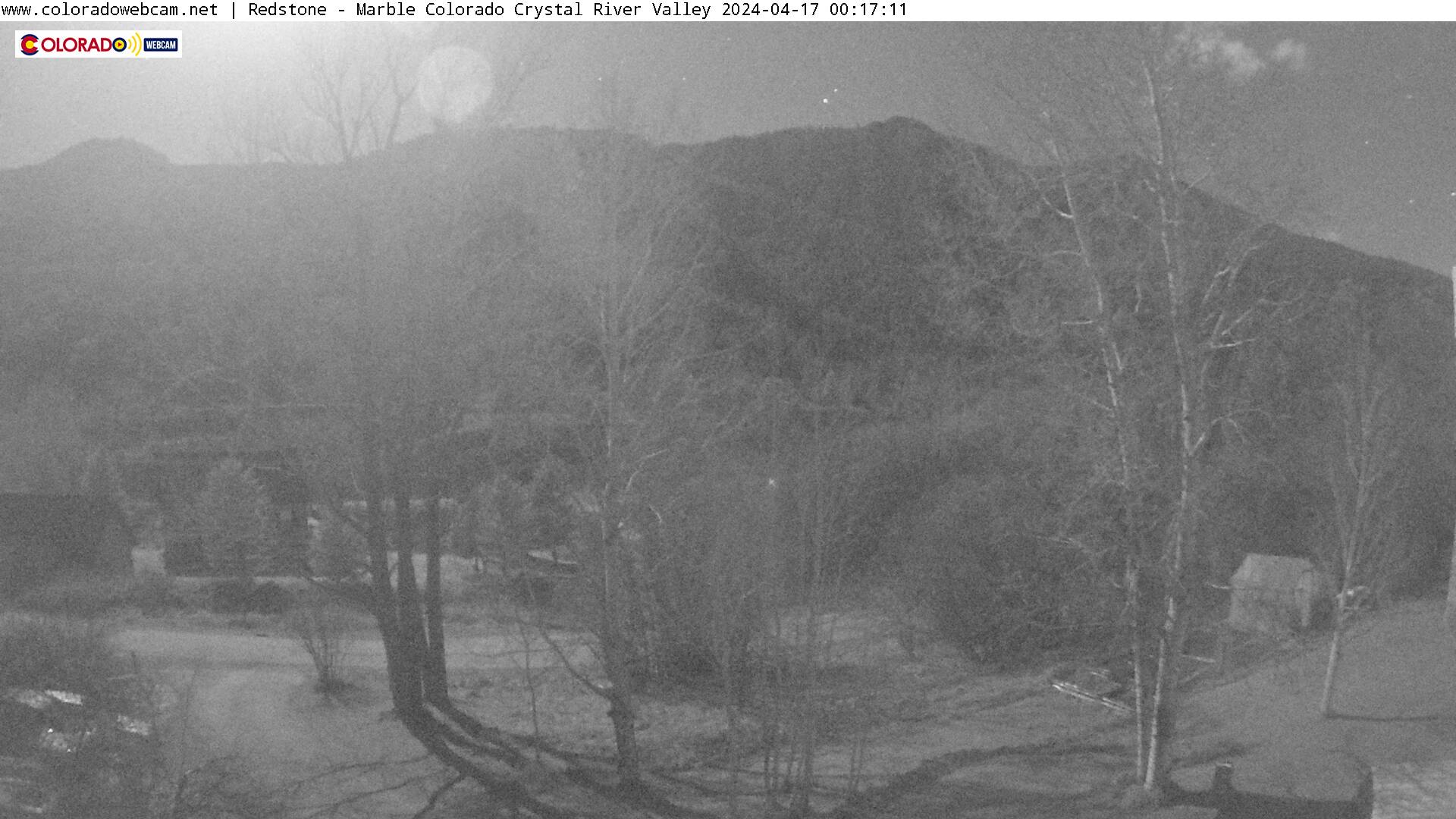Redstone, Colorado Weather Cams
Redstone/Marble/Crystal Valley (via Coloradowebcam.net)

Redstone, Marble, and Crystal Valley: Colorado’s Crown of Coal, Stone, and Spirit
Redstone, Colorado Weather Cams. Tucked into the rugged folds of the Elk Mountains along the Crystal River, the communities of Redstone, Marble, and the ghost town of Crystal form a triad of history, industry, and alpine beauty. These settlements, nestled in Pitkin and Gunnison counties, tell a story of Indigenous heritage, mining ambition, artistic revival, and enduring mountain charm.
Ute Homelands and Early Exploration
Long before prospectors and industrialists arrived, the Crystal Valley was the seasonal homeland of the Ute people. They hunted elk and deer in the meadows, fished the Crystal River, and traversed the high passes between summer and winter camps. Their presence endured for centuries until they were forcibly removed to reservations in 1881, clearing the way for a wave of settlers and speculators.
The 1873 Hayden Survey mapped the region and named many of its peaks—Treasury, Snowmass, and Mineral Point—laying the groundwork for future development. By the 1880s, prospectors had begun to explore the valley in earnest, drawn by rumors of gold, silver, coal, and marble.
Redstone: A Utopian Experiment in Coal
Redstone’s story begins with John Cleveland Osgood, a powerful industrialist and founder of the Colorado Fuel and Iron Company (CF&I). In the late 1890s, Osgood acquired vast coal holdings in Coal Basin, just west of the Crystal River. To support his mining operations, he envisioned a model company town—one that would reflect his ideals of “welfare capitalism.”
Completed in 1902, Redstone was unlike any other mining town in Colorado. It featured 88 Swiss-style cottages for workers, each with indoor plumbing, electricity, and a garden. A clubhouse offered a theater, library, and dining hall. Alcohol was restricted, and workers were required to bathe before entering town. At the center of it all stood Cleveholm Manor—better known as Redstone Castle—a 42-room Tudor-style mansion built for Osgood and his second wife, Swedish Countess Alma Shelgrem.
Redstone’s coke ovens—over 200 beehive-shaped structures—converted coal into coke for use in CF&I’s steel mills in Pueblo. The ovens glowed day and night, and the town thrived briefly as a hub of innovation and labor reform. But the utopia was short-lived. By 1909, the mines closed, and Osgood’s empire began to unravel. He returned in 1924 with his third wife, Lucille, hoping to reinvent Redstone as a resort, but he died before the project could be completed. The Great Depression sealed the town’s decline, and by 1941, only 14 residents remained.
Marble: Stone for a Nation
Just up the valley, the town of Marble was founded in the 1880s near a massive deposit of high-quality white marble. Though the marble was discovered in 1873, it wasn’t until the arrival of the Crystal River Railroad in 1906 that large-scale quarrying became feasible. The Colorado Yule Marble Company built a finishing mill and a 3.5-mile tramway to transport stone from the quarry to the town.
Marble’s population swelled to 1,500 by 1915, with many skilled Italian stonecutters among its residents. The town boasted hotels, a movie theater, and even marble sidewalks. Yule Marble became famous for its purity and was used in the Lincoln Memorial, the Tomb of the Unknown Soldier, and the Colorado State Capitol.
World War I and the collapse of the marble market led to a sharp decline. The quarry closed in 1942, and the town nearly vanished. But in 1988, the quarry reopened, and today it operates under Italian ownership, exporting marble worldwide. Marble has also become a haven for artists and tourists, with the annual Marble/marble sculpting symposium drawing creatives from around the globe.
Crystal: A Ghost Town with a Legendary Mill
Farther up the Crystal River lies the ghost town of Crystal, founded in 1881 after silver was discovered in the surrounding mountains. At its peak, Crystal had over 500 residents, a newspaper, saloons, and a post office. But its remote location—accessible only by treacherous wagon trails—made it difficult to sustain.
The town’s most iconic structure is the Crystal Mill, built in 1893 as a powerhouse for the Sheep Mountain Tunnel. Perched above the river on a rocky outcrop, the mill used water power to generate compressed air for mining equipment. Though the mines closed by 1917, the mill remains one of the most photographed sites in Colorado.
Today, Crystal is accessible only by four-wheel drive or a long hike, and a handful of cabins are occupied seasonally. Preservation efforts continue to protect the mill and the town’s remaining structures.
A Valley of Art, Nature, and Resilience
Despite their industrial origins, Redstone, Marble, and Crystal have become sanctuaries for artists, adventurers, and history lovers. Redstone’s preserved coke ovens and historic district earned it a place on the National Register of Historic Places. The Redstone Inn, once housing for bachelor workers, now serves as a charming lodge for visitors.
Marble’s legacy lives on not only in its stone but in its creative spirit. The town’s quiet streets and alpine setting attract hikers, sculptors, and those seeking solitude. The nearby Lead King Basin and Yule Lakes offer stunning backcountry experiences.
Crystal, though largely abandoned, continues to inspire awe. Its mill, framed by golden aspens and rushing water, stands as a testament to the ingenuity and hardship of Colorado’s mining era.
A Living Legacy
Together, these communities form a living museum of Colorado’s past—where coal fired dreams, marble built monuments, and silver sparked fleeting fortunes. Yet their true legacy lies in their ability to adapt and endure. Whether through art, tourism, or quiet reflection, Redstone, Marble, and Crystal Valley continue to captivate those who venture into their storied embrace.
For more information, visit the Redstone, Colorado official website.
